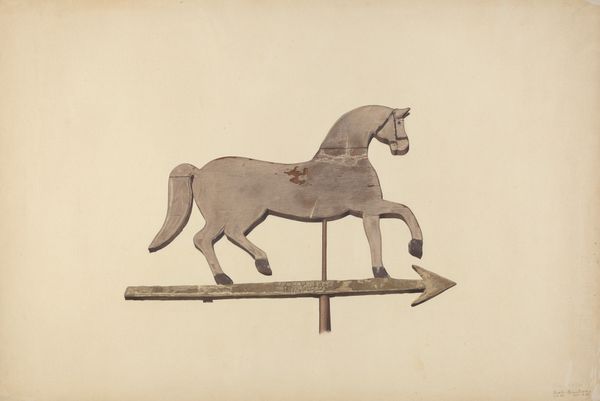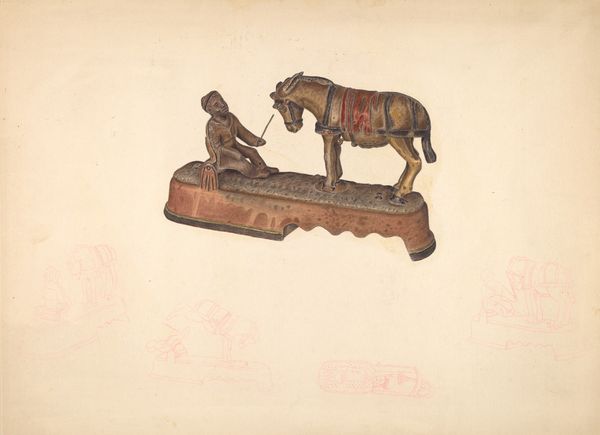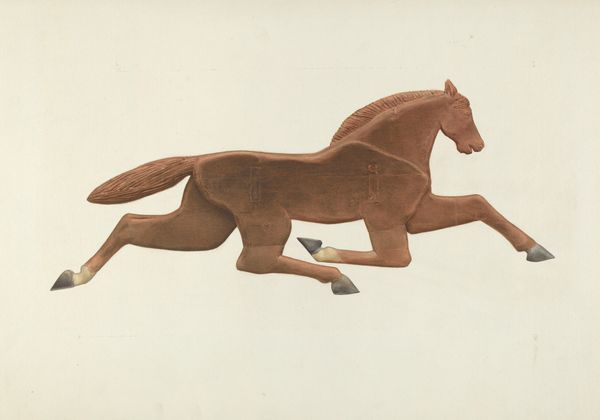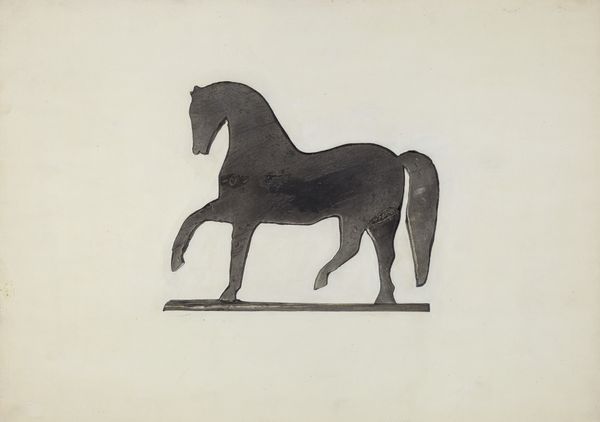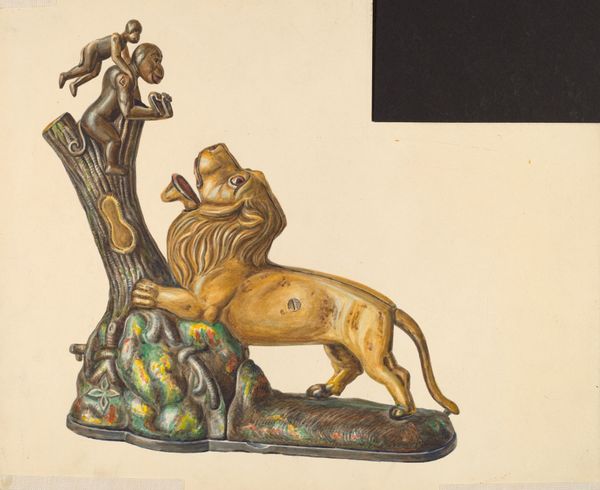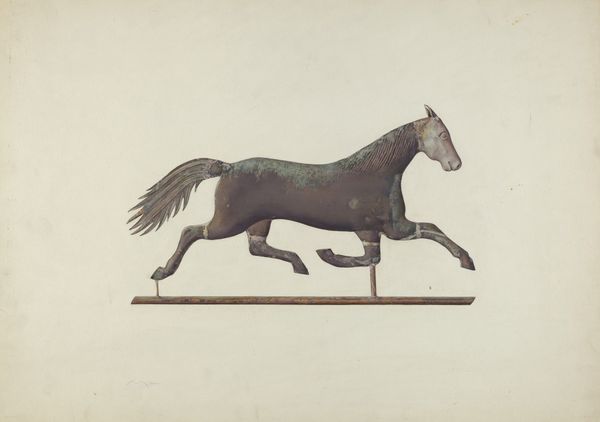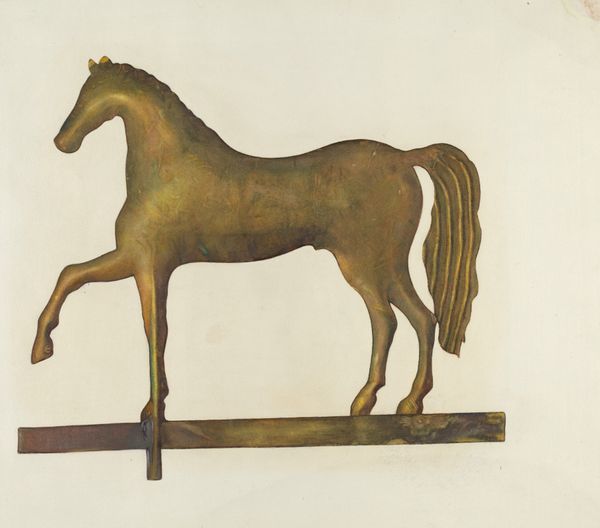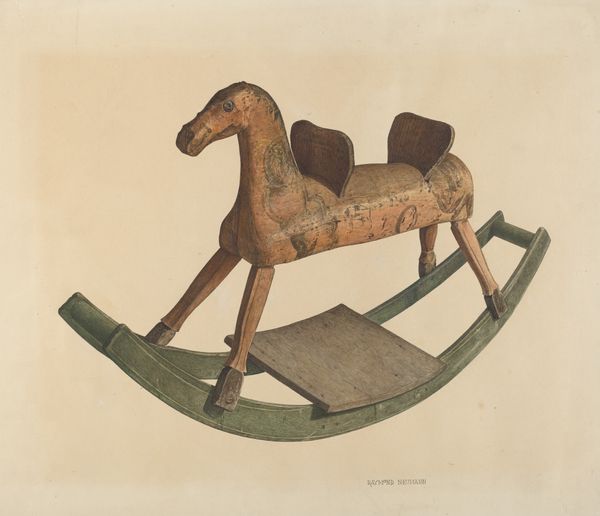
drawing, photography, sculpture, wood
#
drawing
#
landscape
#
figuration
#
photography
#
sculpture
#
ceramic
#
wood
#
realism
Dimensions: overall: 38.2 x 55.6 cm (15 1/16 x 21 7/8 in.) Original IAD Object: 36" long
Copyright: National Gallery of Art: CC0 1.0
Curator: At first glance, I find it disarmingly folksy, like something unearthed from a barn. Editor: That's interesting. The work we are observing is titled "Weather Vane" dating to around 1939, from the hand of John Sullivan. It appears to be a photograph of, among other mediums, a carved wood sculpture. Curator: Carved wood, most likely by hand. Looking at the textures and what appears to be the minimal tooling, one immediately senses the physical engagement involved in shaping this form. How the maker transformed this dense natural material is compelling to me. Editor: Absolutely. And we have to consider its original function as a weather vane, something practical for ordinary citizens that blends utility and folk art. I wonder about its place within the context of rural America at the time it was produced. Curator: Functionality and necessity always intrigues me, in art. But also the class associations and consumption patterns connected to who owns such an object or is depicted by it. What were the societal views towards livestock then and how were those translated to visual material culture like we see here? Editor: That speaks to something vital - the horse depicted becomes a charged cultural symbol. This was also made as the Great Depression was nearing its end, which can provide another lens for interpreting the symbolism of hope for economic recovery, or perhaps harkening to a simpler agricultural past as opposed to industrial futures. The image contains visual traces of an idealized American past during a tumultuous period of its socio-political history. Curator: It's about human needs and the resources one uses to provide those needs – it’s practical art. By its existence, the work embodies the culture around creating and the conditions of existence related to materiality and physical effort in crafting forms to address the necessities. Editor: It’s thought-provoking how something ostensibly homespun ties into so many complex narratives concerning the period when the piece was made. It's never really "just" a weather vane, is it? Curator: No, it’s more about labor and social commentary when examined with its materiality as key to interpreting historical narratives. Editor: A fruitful intersection of our two analytical viewpoints.
Comments
No comments
Be the first to comment and join the conversation on the ultimate creative platform.
